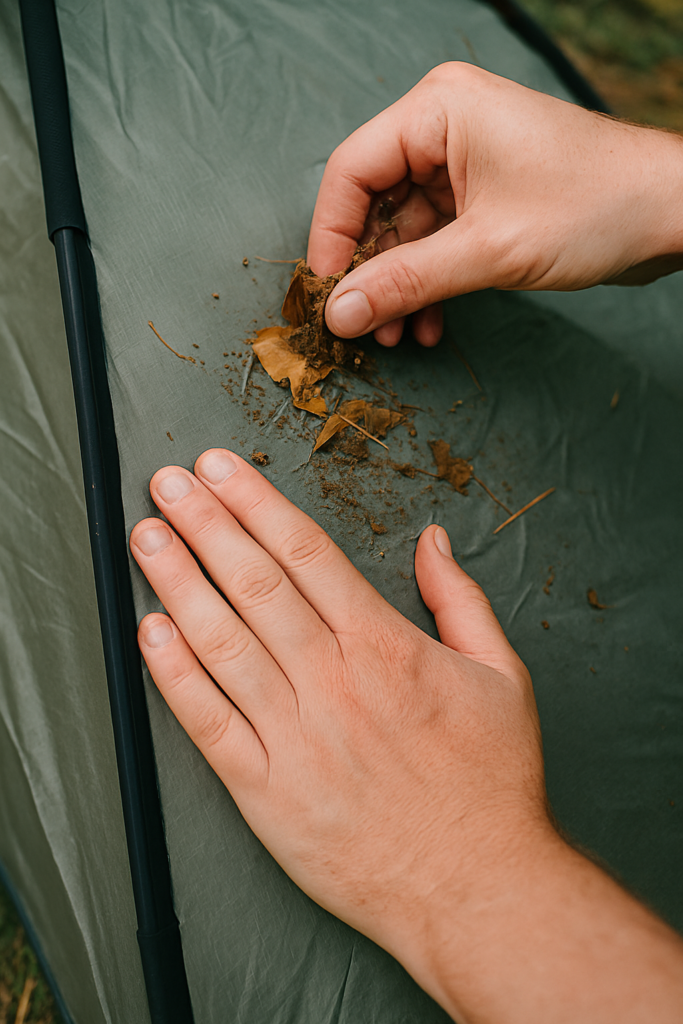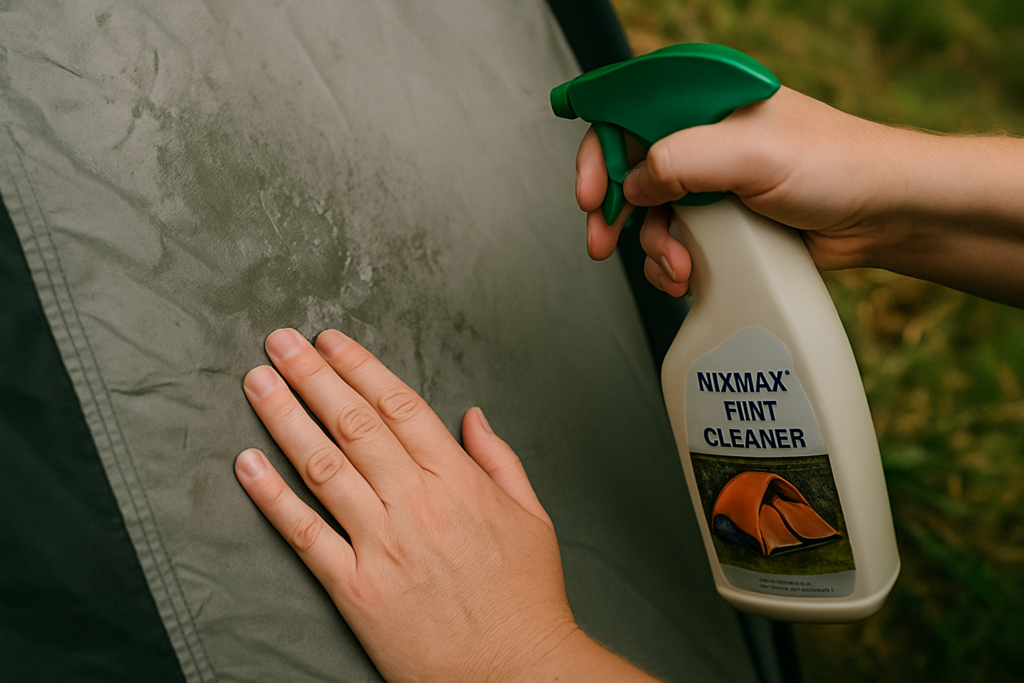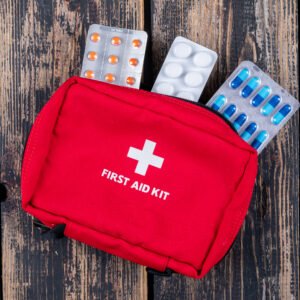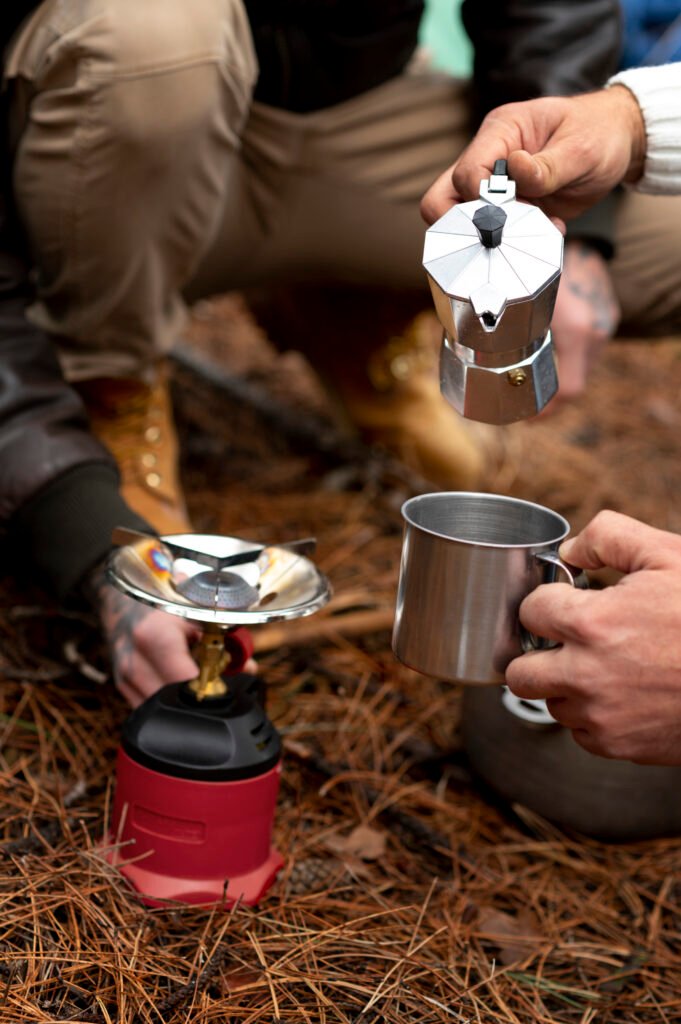How to store your tent to maximize it’s lifespan?
Whether you’re a weekend camper or a seasoned thru-hiker, your tent is more than just gear—it’s your home in the wild. But what happens when camping season ends?
Improper tent storage can lead to mold, mildew, and permanent fabric damage, drastically shortening your tent’s lifespan. That unpleasant musty smell you get when unzipping your tent after months in storage is a clear sign something went wrong.
Storing your tent properly isn’t just good practice—it’s essential for long-term tent care. With the right steps, you can make your tent last for years, or even decades, without needing costly repairs or replacements before your next adventure.
Why is tent storage so important?
Tent fabrics are engineered to handle stress, moisture, and UV exposure during outdoor adventures. But once your trip ends and the tent goes into storage, it faces a whole new set of challenges.
Improper storage can lead to hydrolysis breakdown, mildew growth, and serious fabric degradation. Pack away your tent while it’s still damp, and you’re practically inviting mildew to move in. As one seasoned camper bluntly warned: “Put a tent away wet, and mildew is guaranteed.” And let’s be real—mildew isn’t something you can banish with good intentions and a sprinkle of magic.
So if you want your tent to survive more than a few seasons, storing it properly is non-negotiable.
Here’s the thing: your tent is basically a portable fabric home. After the adventure, it often gets crammed into a stuff sack, compressed, and forgotten for months. Sometimes that’s harmless. Other times, it’s the perfect recipe for disaster.
Rule #1: Always Store Your Tent Bone Dry
This is non-negotiable: never store a tent that’s even slightly damp. Moisture is the silent killer of tent fabric, and mildew doesn’t need much to take hold.
But what exactly does “dry” mean?
- No visible water droplets—anywhere
- No musty or damp odor (that smell is moisture warning you)
- Fabric, poles, stakes, and guy lines must be fully air-dried
- Don’t forget the footprint—it needs to be completely dry too
💡 Real-life lesson: Lucy from Oregon learned the hard way. She admitted online that she lost her first tent to mildew because she “got lazy about drying it.” Now she’s built a dedicated drying station in her garage. That’s how you turn a mistake into a smart habit.
⏱️ How Long Should You Dry a Tent?
Typically, 24 to 48 hours indoors with solid airflow does the trick. If you’re in a humid climate, it might take longer.
Pro tip: set up a fan to keep air circulating and speed up the drying process.
Rule #2: Let Your Tent Breathe—No Stuff Sack for Storage
Your tent’s stuff sack is great for backpacking—but terrible for long-term storage. Why? Because tight compression over time weakens the fabric, stresses the seams, and traps any lingering moisture.
Instead, store your tent loosely in a breathable bag—like a cotton pillowcase or mesh gear sack. This allows airflow and prevents creases that can lead to premature wear.
Real-world tip: Campers on forums like Backpacking Light and REI Community often recommend rotating how you fold or roll your tent to avoid creating permanent stress lines.
❓Q: Can I just leave it in the original bag if it’s dry?
A: Technically yes, but it’s not ideal. For long-term tent care, give it room to breathe. Your tent will thank you with a longer lifespan and fewer surprises when you unpack it next season.
🏡 Rule #3: Store Your Tent in a Cool, Dry, and Dark Place
Where you stash your tent matters just as much as how you pack it. Heat, humidity, and sunlight are the enemies of tent fabrics—especially those with waterproof coatings.
Camping Gear Storage: Building a System That Works
🌬️ The “Breathable Bag” Strategy
Let’s be clear—plastic bags are a no-go. They trap moisture, and that’s a fast track to mold and mildew. According to several trusted camping gear storage guides, switching to breathable materials is one of the simplest ways to protect your tent fabric long-term.

Here’s what actually works:
- Mesh laundry bags that allow airflow
- Cotton sacks that wick away residual moisture
- Oversized gear bags with built-in ventilation panels
- Even an old pillowcase is better than sealing your tent in plastic
If it breathes, it belongs in your gear closet.
🧺 The Hanging Method

If you’re short on shelf space, hanging your tent is a smart alternative. It keeps the fabric relaxed and avoids compression damage.
Some helpful hanging tips:
- Use padded hangers to support the tent body
- Hang the rainfly separately to prevent sticking
- Store tent poles in their own bag nearby for easy access
- Skip the folding—let the fabric drape naturally
As one camper put it, “Hanging things up works very well”—especially in tight spaces. And they’re right.
🗄️ The Shelf Storage Approach
Got a few shelves in your garage or gear room? Great. Lay your tent flat and loose across them. This method avoids pressure points and lets the fabric rest. Just remember to change the folding pattern every few months to prevent deep creases from forming.
💬 A hunter from Tennessee shared on a camping forum that he uses Costco shelving for all his gear. He admitted it’s “not the most organized setup,” but he felt that it was the best practical way to protect his gear.
How to Store Your Tent Properly for Long-Term Use
Whether you’re a weekend camper or a seasoned backpacker, your tent is your second home in the wild. But once the season ends, storing it properly is key to keeping it in top shape for years to come. Here’s your complete guide to tent maintenance and smart outdoor gear storage—crafted for real campers like you.
🧼 Tent Maintenance: The Pre-Storage Ritual
Clean Like You Mean It
Before you stash your tent away, give it the care it deserves. A clean tent lasts longer, smells fresher, and performs better on your next adventure.
Step 1: Shake It Out

- Remove all loose dirt, leaves, and pine needles
- Let mud dry completely, then gently brush it off
- Take off any temporary tape or field repairs
Step 2: Wash It Right

- Use only a tent-specific cleaner—never harsh detergents
- Spot-clean stains as soon as you notice them
- Rinse thoroughly to remove all soap (leftover soap attracts grime)
Step 3: The Smell Test
- Give it a sniff before storing
- If it smells musty, let it air-dry longer or rinse again
- Never store a damp tent—mold and mildew will ruin it
🔍 Inspect Everything Before You Pack It Up
Now’s the time to fix things—not when you’re already out camping again. Focus on the most commonly stressed areas:
- Seam tape – check for peeling or cracks
- Zippers – clean and apply zipper lubricant
- Guy-out points – inspect for fraying or tears
- Pole sleeves and corners – common wear spots
Q: Should I fix small issues before storage? A: Absolutely. What’s minor now can turn into a bigger (and more expensive) problem after months in storage.
🏡 Outdoor Gear Storage: Best Practices for Your Tent
Location Is Everything
When it comes to how to store your tent, temperature and humidity make all the difference. Your tent prefers the same conditions you do—not too hot, not too humid, and definitely not damp.
Places to Avoid:
- Attics in summer – high temps can damage coatings
- Basements in winter – damp and mold-prone
- Sunlit garages – UV rays can break down fabrics
- Unventilated sheds – moisture buildup and pests are a risk
Smart Storage Options:
- Climate-controlled closets inside your home
- Under-bed storage in your bedroom
- Dedicated gear closets or rooms
- Well-ventilated garages with moisture control systems
☀️ The UV Enemy: Keep It Out of the Sun
Even while in storage, UV damage can quietly ruin your tent. Prolonged exposure to sunlight degrades fabric and waterproof coatings.
✅ Always store your tent in a cool, dry, and dark place. That sunny corner might be perfect for your houseplants—but it’s a silent killer for your gear.
🧭 Final Thoughts
Proper tent maintenance and smart outdoor gear storage aren’t just nice-to-do—they’re essential if you want your tent to last for years. Clean it, inspect it, and store it somewhere dry and shaded. These small steps now can save you from big headaches next camping season.
Tent Care: Seasonal Maintenance Made Simple
🔄 Quarterly Flip
Every 3–4 months, unfold and refold your tent to prevent creases and catch early issues like:
- Pest damage
- Moisture buildup
- Fabric discoloration
- Hardware wear
🧪 Annual Deep Dive
Set up your tent indoors once a year. Inspect, clean, and replace worn parts. It’s the easiest way to avoid campsite surprises and extend your tent’s lifespan.
⚠️ Common Tent Storage Mistakes to Avoid
- Stuff Sack Trap: Don’t store your tent compressed—use breathable bags instead.
- Quick Pack-Up: Rushing cleanup traps moisture and dirt. Take time to clean properly.
- Mixed Bag Storage: Keep dirty gear separate to avoid cross-contamination.
- Set It and Forget It: Regular check-ins prevent long-term damage.
🧬 Tent Longevity: Why Smart Storage Matters
Tent fabrics degrade due to:
- Hydrolysis: Moisture breaks down waterproof coatings
- Mechanical stress: Compression weakens fabric
- Chemical reactions: Dirt and oils accelerate wear
- UV degradation: Even indirect sunlight causes fiber damage
✅ Proper tent storage tackles all these threats—keeping your gear adventure-ready for years.
The Bottom Line on Tent Storage
Your tent is more than just fabric and poles—it’s your trusted companion in the wild. Whether you’re a weekend warrior or a seasoned trekker, proper tent storage is the secret to keeping your camping gear adventure-ready for years to come.
Neglecting storage can lead to mold, tears, and costly replacements. But with a few simple habits—like cleaning before packing, storing in a cool, dry place, and checking for damage—you’ll extend your tent’s life and avoid unpleasant surprises on your next trip.
Pro tip: Keep a simple gear log. Track storage dates, repairs, and any issues. It’s a small habit that can make a big difference.
Sometimes, the best camping memories start at home—by taking care of the gear that makes the wild moments possible.
Your tent has protected you under the stars. Now it’s your turn to protect it between adventures.

















